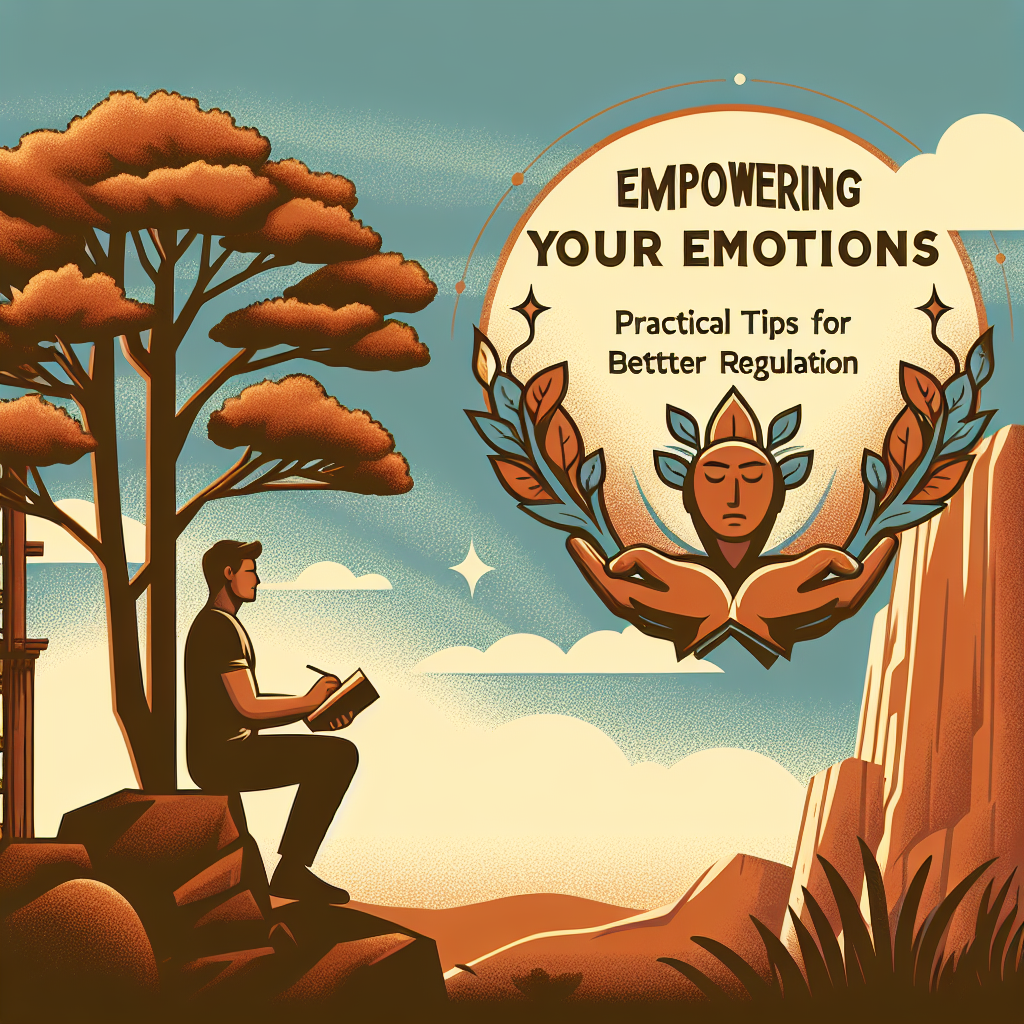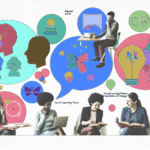
Introduction
In a world that often feels chaotic, where emotions run high and the pressures of daily life can feel overwhelming, understanding how to regulate our emotions is more important than ever. Empowering Your Emotions: Practical Tips for Better Regulation can transform not only how you handle stress and adversity but also how you connect with others and navigate through life’s challenges. Whether you’re looking to improve your relationships, enhance your decision-making skills, or simply find more peace in your day-to-day existence, this guide is designed for you.
According to research, emotional regulation is a crucial skill that contributes to mental health and overall well-being. It enables us to control our feelings effectively rather than allowing them to control us, giving us the power to respond thoughtfully instead of reacting impulsively. In this article, we will explore practical tips that empower you to master your emotions, case studies that highlight effective strategies in action, and actionable takeaways that you can implement immediately.
Understanding Emotional Regulation
What Is Emotional Regulation?
Emotional regulation refers to the processes by which individuals influence their emotions—when they experience them, how they express them, and how they navigate the aftermath. This concept includes a broad range of strategies, from cognitive restructuring to mindfulness practices. The goal is not to suppress feelings but to understand and manage them effectively.
The Importance of Emotional Regulation
Emotional regulation is essential for several reasons:
Improved Relationships: Regulating your emotions positively impacts interactions with friends, family, and colleagues.
Better Decision-Making: When emotions are well-regulated, you are less likely to make impulsive decisions that you may regret later.
Enhanced Resilience: Those who can navigate their emotional landscapes tend to be more adaptable and resilient in the face of challenges.
- Mental Health Benefits: Effective emotional regulation is linked to lower levels of anxiety and depression.
Practical Tips for Emotional Regulation
1. Mindfulness and Awareness
One of the most effective ways of empowering your emotions is through mindfulness. Being fully present in the moment allows you to notice your feelings without judgment.
How to Practice Mindfulness:
- Body Scan Meditation: Lie down comfortably and focus on different parts of your body, identifying any tension and consciously releasing it.
- Breathing Exercises: Take slow, deep breaths for a few minutes, allowing your thoughts to settle.
2. Naming Your Emotions
Research suggests that simply naming your emotions can reduce their intensity and help you manage them better. This practice fosters self-awareness and can lead to better emotional outcomes.
A Case Study:
In a clinical setting, therapists have found that patients who labeled their emotions such as "anxiety" or "frustration" during therapy reported decreased levels of distress.
3. Cognitive Restructuring
Changing the way you think about a situation can have a profound impact on how you feel.
Practical Steps:
- Identify Negative Thoughts: Recognize patterns of negative thinking.
- Challenge Those Thoughts: Ask yourself if they are based on facts or assumptions.
- Replace with Positive Thoughts: Find a more balanced perspective.
4. Journaling Your Emotions
Introspection through journaling can be a powerful tool. Writing about your experiences allows you to clarify your thoughts and feelings, leading to better emotional understanding.
Daily Journaling Prompt:
- Write about one event that affected your emotions today and explore why it made you feel that way.
5. Seek Social Support
Don’t underestimate the power of social connections. Sharing your feelings with others can provide perspective and relief.
Practical Tip:
- Create a Support System: Identify friends or family members who are good listeners and can be your emotional anchors.
6. Engage in Physical Activity
Physical exercise releases endorphins, which are natural mood lifters. Regular activity helps to decrease anxiety and improve self-esteem.
Case Study:
A workplace implemented a "Wellness Wednesdays" program, encouraging employees to participate in group exercise sessions. The results showed a significant decrease in reported stress levels.
Chart: Emotional Regulation Strategies and Benefits
| Strategy | Emotional Benefits | Practical Applications |
|---|---|---|
| Mindfulness | Increased awareness of emotions | Meditation sessions, breathing exercises |
| Naming Emotions | Better emotional clarity | Use emotion wheels or lists |
| Cognitive Restructuring | Improved perspective | Challenge negative thoughts daily |
| Journaling | Enhanced self-reflection | Daily journaling prompts |
| Social Support | Emotional relief and perspective | Build a support network |
| Physical Activity | Mood enhancement | Participate in regular workouts |
Emotional Regulation in Real Life: Case Studies
Case Study 1: Workplace Dynamics
In a high-stress corporate environment, employees struggled with anxiety and burnout. By introducing mindfulness workshops and emotional resilience training, the organization saw a 40% reduction in reported stress. Employees learned practical tactics for empowering their emotions and effectively managing workplace challenges.
Case Study 2: Family Interactions
A family undergoing therapy faced communication barriers. Through emotion labeling techniques and family journaling sessions, they learned to articulate their feelings. Over time, family conflicts diminished, illustrating how emotional regulation can strengthen familial bonds.
Conclusion
Empowering Your Emotions: Practical Tips for Better Regulation is a continuous journey, not a destination. While we may not be able to control our emotional triggers, we can control our responses to them. The strategies outlined in this article—mindfulness, naming emotions, cognitive restructuring, journaling, social support, and physical activity—offer tangible ways to improve your emotional well-being and strengthen your relationships.
Begin implementing these tips today, and watch how your interactions and life experiences transform. Remember, the power to regulate your emotions lies within you. Embrace it, and you will enrich not just your life, but the lives of those around you.
FAQs
1. What are the signs that I need to improve my emotional regulation?
Signs can include feeling overwhelmed easily, having intense reactions to minor stresses, or struggling to maintain relationships.
2. Can emotional regulation techniques help with anxiety or depression?
Yes, by managing emotions effectively, you can decrease symptoms of anxiety and depression through a more balanced emotional experience.
3. How long does it take to see results from emotional regulation strategies?
It varies for each person. Some may notice improvements within a few weeks, while others may take longer to develop sustainable habits.
4. Are these techniques suitable for everyone?
Absolutely! Although some techniques may resonate more than others, most can be adapted to suit various individual needs and backgrounds.
5. What if I struggle with some of these techniques?
Struggling is common. Consider seeking professional help, such as therapy, to further refine these skills with expert guidance.
By understanding and employing the techniques of emotional regulation, you can enhance your quality of life, foster better relationships, and create a more peaceful state of being. Start your journey today!














